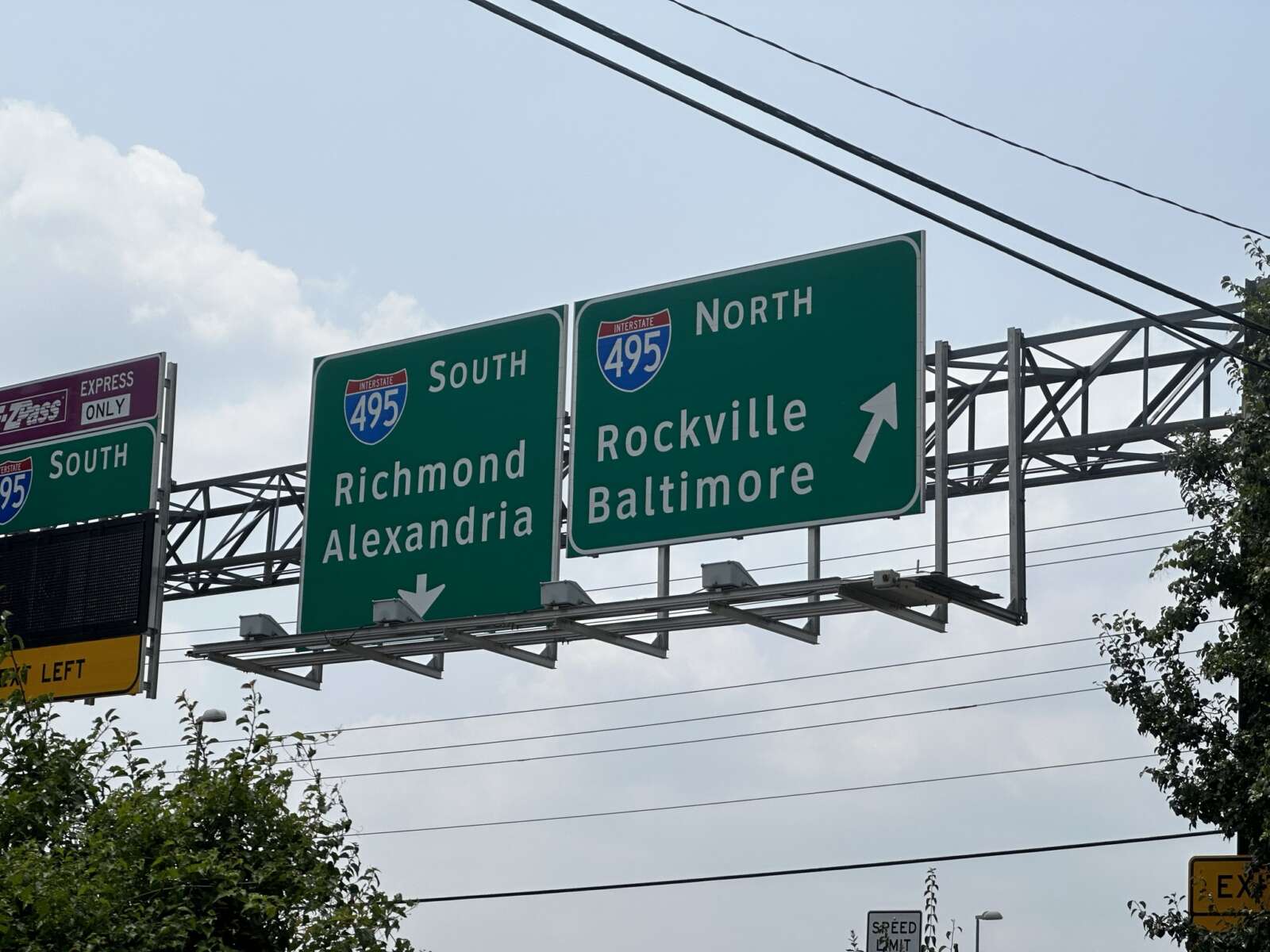
Maryland’s plans for the American Legion Bridge and its side of the Capital Beltway remain a big question mark, but its drivers at least will get a head’s up before they reach the toll lanes now under construction in McLean.
The Virginia Department of Transportation is working with its Maryland counterpart on an agreement that will enable the I-495 Northern Extension (495 NEXT) builder to install signs related to the project on the northern side of the Potomac River.
Six sign structures and accompanying power and communications utilities need to be built in Maryland so the upcoming I-495 Express Lanes can operate correctly, VDOT officials told the Commonwealth Transportation Board (CTB) at its March 19 meeting.
“We need to have signage in Maryland so people approaching our express lanes understand what to do and how it works,” Virginia Secretary of Transportation W. Sheppard Miller said. “…It’s about our cooperation with Maryland to get the things that we need in Maryland done so that our lanes will work appropriately and properly when folks get to Virginia.”
Under the agreement, VDOT and its private partner Capital Beltway Express — a joint venture of the engineering firm Fluor and toll lanes operator Transurban — will install and maintain most of the new signs, which will provide directions for using the express lanes and other messages.
Maryland will be responsible for two guide signs for the interstate’s exits that aren’t related to the express lanes, according to VDOT acting megaprojects director Michelle Shropshire.
The CTB will be asked to authorize VDOT staff to sign the agreement at a meeting in April.
Miller noted that the presentation came just a few days after the two-year anniversary of the official start of construction on 495 NEXT, which will widen 2.5 miles of I-495 from the Dulles Toll Road in Tysons to the George Washington Memorial Parkway in McLean with two express lanes in each direction.
“I remember cutting the ribbon [on] a very chilly morning in Northern Virginia. It was a great day,” he said.
The toll lanes remain on track to begin operating in December 2025, and the overall project is set to finish in May 2026, Shropshire said.
As construction continues to move along, some Fairfax County officials raised concerns last month about a lack of clarity on VDOT’s efforts to coordinate with Maryland and the impact of the road work on McLean residents, commuters and the environment.
Virginia and Maryland’s then-governors Ralph Northam and Larry Hogan announced a $1 billion agreement in 2019 to rebuild the aging American Legion Bridge and expand their respective sides of the Beltway to address traffic congestion. However, public opposition held back Maryland’s toll lanes project, and Transurban pulled out altogether last March.
Maryland signaled that it may pursue a fully public project when it applied for a federal grant in August, and officials held public open houses last fall to get feedback on a proposal that would replace and widen the bridge, along with a portion of I-270.
Last week, a federal judge dismissed a lawsuit from environmental, neighborhood and historic preservation groups seeking to block the potential project, but Maryland’s plans going forward remain unclear.
“This is an important step forward to D.C. area residents who are counting on this project to bring needed congestion relief, better transit service, and improved bike and pedestrian connections in this corridor,” said Jason Stanford, president of the Northern Virginia Transportation Alliance, which supports the toll lanes projects. “Now that this obviously frivolous lawsuit has been dismissed, it’s time for Maryland to move forward with this critical, multimodal transportation improvement for our region.”
Plaintiffs in the lawsuit included the Northern Virginia Citizens Association, a group of McLean residents who also sued VDOT last year over 495 NEXT. Residents along Live Oak Drive in particular have vocally opposed the project, lamenting the loss of trees and other environmental and health impacts.
In recent emails to VDOT officials, some reported that construction has, at times, disrupted their phone, cable and water services.
VDOT will provide an update on 495 NEXT at two public meetings next month: a virtual one on April 8 and an in-person one at Langley High School (6520 Georgetown Pike) on April 11. Both meetings will last from 6:30 to 8:30 p.m.
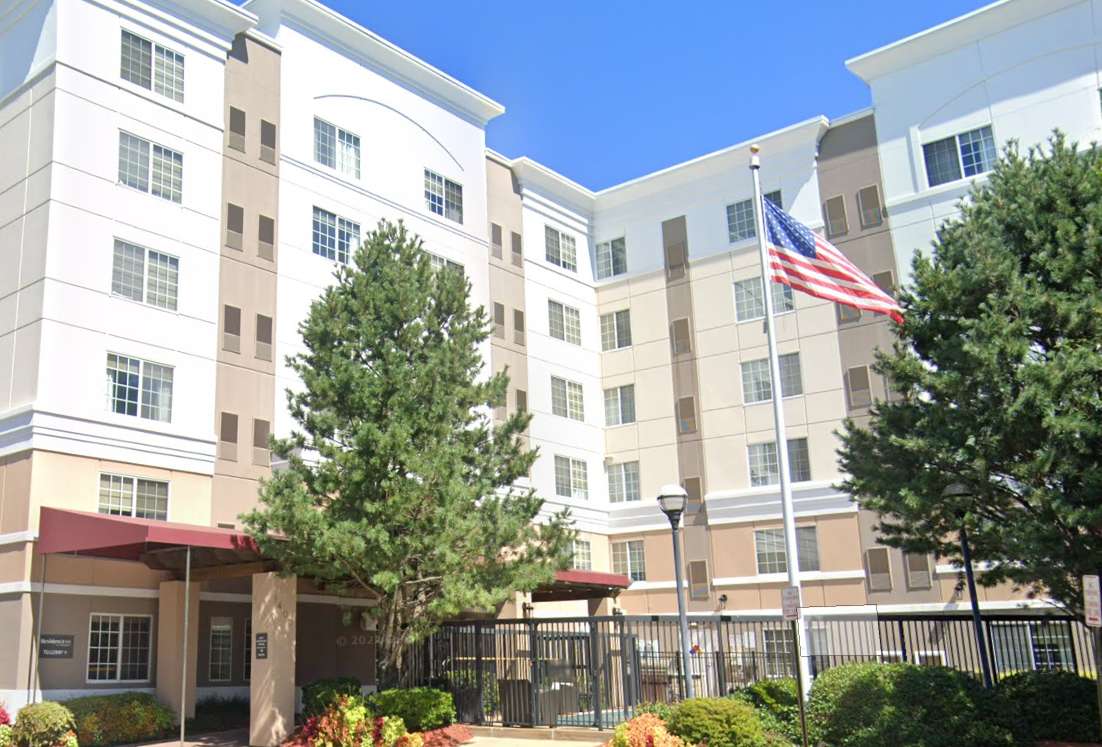
Police recently seized over a dozen firearms and some drugs from a Maryland house in connection to an armed robbery at a hotel in Tysons.
Officers were called to the Residence Inn at 8400 Old Courthouse Road at 3:46 a.m. on Dec. 19 for the reported robbery, according to the Fairfax County Police Department.
“The suspects displayed a firearm and pistol whipped the victim before stealing money,” the FCPD said.
The resulting investigation identified a 33-year-old man from Maryland and a 26-year-old woman from Sterling as the suspects, police say.
It also led detectives to search a home in Prince George’s County where they found 13 firearms, three of them reported stolen, and four pounds of a substance believed to be meth. The Prince George’s County Police Department assisted with the search.
The man and woman were arrested by the FCPD’s Fugitive Track and Apprehension Squad. They’re both being held at the Fairfax County Adult Detention Center without bond and face charges of robbery and the use of a firearm in commission of a felony.
The woman has also been charged with crimes related to transporting and possessing drugs, including transportation of over an ounce of a Schedule I/II substance into Virginia, possession of a firearm with Schedule I/II narcotics, possession of ammunition by a convicted felon, possession of a firearm by a non-violent convicted felon, and possession with intent to distribute Schedule I/II narcotics.
Image via Google Maps
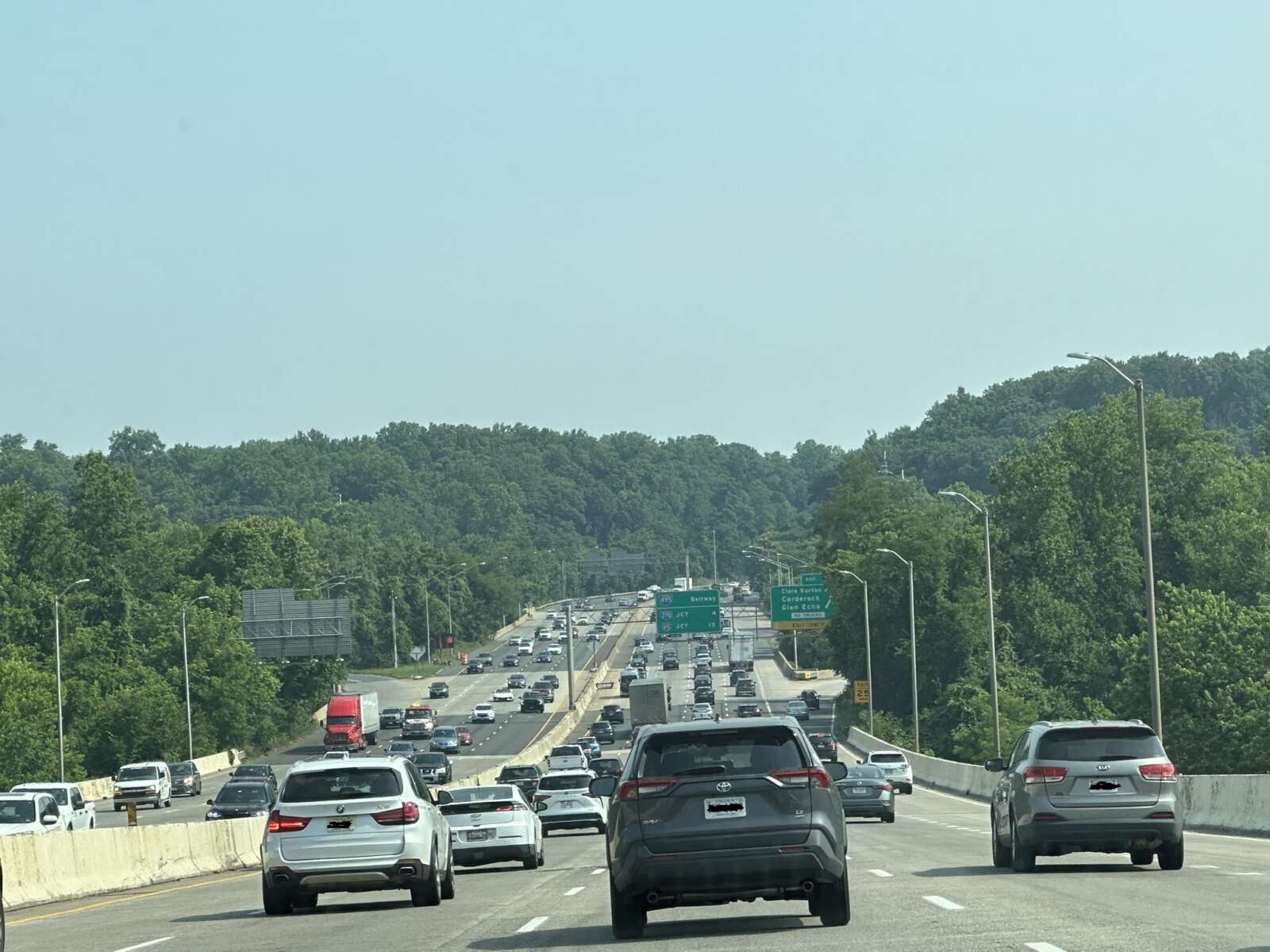
(Updated at 9:35 a.m. on 8/22/2023) Maryland has renewed its commitment to replacing the American Legion Bridge and adding express lanes on the Capital Beltway, much to the relief of Northern Virginia transportation officials.
The Maryland Department of Transportation has applied for a federal grant to fund the initial phase of its project to widen the Beltway (I-495/I-270) and reconstruct the aging bridge, which provides the only road connection between Fairfax County and Montgomery County, Maryland Gov. Wes Moore announced today (Monday).
The announcement is the first indication of how Maryland will proceed since private express lanes operator Transurban backed out in March over concerns about delayed environmental approvals, lawsuits and the change in leadership after Moore succeeded Larry Hogan in January.
Since Hogan and then-Virginia governor Ralph Northam announced an agreement in 2019 to replace the heavily used American Legion Bridge, Maryland’s cooperation has been seen as critical to the success of Virginia’s I-495 Northern Extension (495 NEXT) project, which is now under construction and will extend the Beltway’s toll lanes from the Dulles Toll Road in Tysons to the bridge north of McLean.
“Governor Moore’s plan ensures these long-awaited improvements will become a reality. This is great news for area travelers and the economic competitiveness of our entire region,” Northern Virginia Transportation Alliance President Jason Stanford said in a statement. “The Alliance applauds Governor Moore for finding a multimodal solution to address one of the region’s worst bottlenecks and move more people through one of our most congested corridors.”
The Virginia Department of Transportation has estimated that 495 NEXT will move 2,500 more people per hour in both directions when the express lanes open in 2025. However, it would move 5,400 more people an hour with Maryland’s project in place.
Skeptics of 495 NEXT, including Dranesville District Supervisor John Foust, have argued that widening I-495 in Virginia without a concurrent widening in Maryland will only push the existing congestion further north, leaving McLean residents to deal with the traffic, environmental and neighborhood impacts without getting any of the supposed benefits.
Noting that many details of Moore’s plan have yet to be shared, such as what kind of “managed lanes” will be involved, Foust called the announcement “great news” as a sign that Maryland is committed to helping address congestion on the American Legion Bridge.
However, assuming it secures the necessary approvals and funding, the Maryland project will still likely take years to complete, Foust said in a statement.
The estimate I have seen is that the project could be complete in eight years (by 2031) if all goes well. Unfortunately, that means commuters who cross the American Legion Bridge, and residents of the communities around the bridge, will continue to suffer from the impacts of severe congestion for at least that long unless something is done in the interim. Given the miserable traffic conditions around the bridge, eight years is too long to wait for any relief. That is why I believe VDOT needs to deliver interim solutions that mitigate the congestion impacts over the bridge and in the surrounding neighborhoods.
The 495 NEXT project was designed to seamlessly connect to a version of an American Legion Bridge project that we now know will not be built. In addition to very nasty congestion, established neighborhoods along the path of the 495 NEXT project are being severely impacted by construction activity. Given the dramatic change of plans and potentially major reduction of scope for the Maryland project, I believe VDOT should determine whether and by how much it can reduce the scope of disturbance of its project to help mitigate those construction-related impacts on the adjacent communities.
Shifting away from the public-private partnership that Hogan sought and that has built Virginia’s growing express lanes network, Moore emphasized in his announcement that Maryland’s project will incorporate transit and other multimodal improvements, including pedestrian and bicycle access. Read More

A 29-year-old man from Annandale will spend the rest of his life in federal prison after he was sentenced on Friday (Aug. 4) for participating in and helping cover up the murder of a fellow gang member.
Sentenced by U.S. District Judge Paula Xinis in Prince George’s County, Maryland, Jose Henry Hernandez-Garcia was convicted of racketeering, murder and conspiracy to destroy and conceal evidence on Dec. 16, 2022 after a two-week trial.
According to the Maryland U.S. Attorney’s Office, Hernandez-Garcia and at least three other members of the international gang MS-13 stabbed and killed an unnamed victim at the house of Jose Domingo Ordonez-Zometa — allegedly their branch’s leader — in Landover Hills, Maryland, on March 8, 2019.
Ordonez-Zometa had called a meeting to discuss suspicions that the victim was working with the police, prosecutors said in a news release.
During the questioning, Hernandez-Garcia, his co-defendants and at least one other MS-13 member assaulted Victim 1, based on their incorrect suspicions that Victim 1 was cooperating with law enforcement. They also assaulted another MS-13 member who attempted to defend Victim 1. The assault culminated with Ordonez-Zometa, as LGCS clique leader, ordering that Victim 1 be killed. Hernandez-Garcia, [Jose Rafael] Ortega-Ayala, and other MS-13 members then stabbed and murdered Victim 1 in Ordonez-Zometa’s basement.
According to trial testimony, after the murder, Ordonez-Zometa ordered Hernandez-Garcia, Ortega-Ayala, and other LGCS clique members and co-conspirators, to conceal and destroy evidence of the murder. Ortega-Ayala and other MS-13 members transported the body of the victim to a secluded location in Stafford County, Virginia, and set the victim’s body on fire, then destroyed and concealed evidence of the murder from the vehicle used to transport the victim. Meanwhile, Ordonez-Zometa, Hernandez-Garcia, and another MS-13 member stayed at the crime scene and attempted to remove, destroy, and conceal evidence of the murder, including the blood of Victim 1.
Ordonez-Zometa and Ortega-Ayala were also convicted in December. The former was given life in prison on March 6, while the latter could get the same sentence at a hearing on Sept. 25.
This isn’t the first time a Fairfax County resident has been convicted of a murder tied to MS-13 activities. Last November, five people were sentenced to life in prison for killing two teens at Holmes Run Stream Valley Park in Annandale in 2016.
Photo via Wesley Tingey/Unsplash
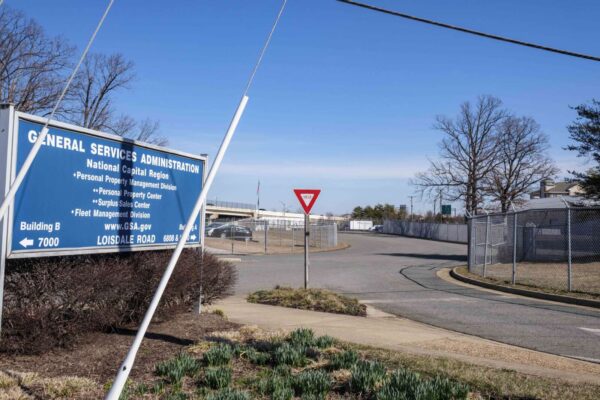
There has been another change in criteria for determining where the new FBI headquarters will go, prompting annoyance and even anger from several local officials.
Late last week, the General Services Administration (GSA) announced that it will now weigh cost and “advancing equity” as factors of higher importance when deciding if the new FBI headquarters will end up in Springfield or one of two sites in Prince George’s County, Maryland, per an updated site selection plan.
“The consultations with the delegations provided valuable feedback, and helped us refine our plan to maximize value for the FBI and the public,” said GSA commissioner Nina Albert in a press release. “While the core elements of the site selection plan remain the same, we have updated the plan to incorporate new government-wide directives and to increase the consideration of cost to deliver better value for taxpayers. We believe these adjustments will support a process that results in a site that best serves the FBI and the public for years to come.”
The federal agency also lowered the importance of transportation accessibility and the proximity of being near other FBI facilities (like Quantico, which is in Virginia). Proximity remains the highest determining factor, though, sitting at 25%.
This is the second time in less than a year that the GSA “updated” its criteria for selecting the location of the new headquarters. It also comes a little over a month after the FBI stressed the importance of having a headquarters close to its pre-existing facilities.
GSA anticipates making a decision on where the new FBI headquarters will go “in the coming months,” the press release notes. Some had anticipated a decision was going to be announced in March, but that didn’t happen.
The late-stage shift has prompted a number of Virginia lawmakers to speak out, arguing that this change is a result of political inference and constant lobbying from Maryland officials seeking to gain an edge for the Prince George’s sites.
Rep. Gerry Connolly, whose 11th District includes the Springfield site, was particularly incensed. In a statement posted on social media, Connolly accused Maryland of trying to “cook the books” and the GSA of caving to political pressure.
Only Virginia has consistently opposed and condemned political meddling in what should be a purely independent, agency-run effort. We will continue to make the case for the only location that truly makes sense for the FBI HQ – Springfield, Virginia. pic.twitter.com/WqdGZNM6H7
— Rep. Gerry Connolly (@GerryConnolly) July 14, 2023
Virginia Sens. Tim Kaine and Mark Warner put out a combined statement reiterating their confidence that the FBI will still end up moving to Fairfax County, coupled with worries that the change will further delay a decision that’s been in the works for years.
The GSA didn’t pluck its initial criteria out of thin air — it spent years talking to experts and carefully deliberating on what is best for the mission of the FBI. While we are concerned that these changes to the criteria will further delay what has already been a drawn-out, decade-long process to select a new site to replace the dilapidated headquarters downtown, we remain confident that Virginia continues to be a home run in every category, and encourage the GSA to draw this process to a close sooner rather than later.
In a statement to FFXnow, Fairfax County Board of Supervisors Chairman Jeff McKay also expressed his displeasure, particularly with the likelihood of another delay of a final decision. Read More
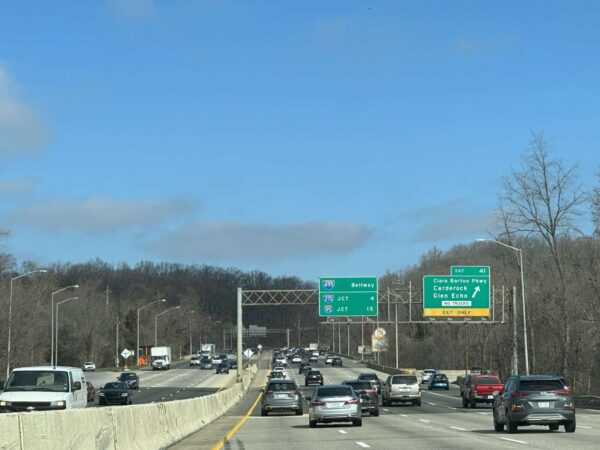
(Updated at 2:50 p.m. on 3/16/2023) Virginia’s extension of the I-495 Express Lanes past the George Washington Memorial Parkway in McLean remains on track for a 2025 opening, even as its counterpart across the Potomac River faces another setback in its efforts to widen the Capital Beltway.
Private toll lanes operator Transurban pulled out of Maryland’s project to add toll lanes on its side of the Beltway and replace the American Legion Bridge on Friday (March 10), citing “significant delays to environmental approvals, changing political landscape and environmental lawsuits that remain unresolved.”
While that project is now in limbo, the Virginia Department of Transportation says Transurban’s departure won’t affect its I-495 Northern Extension (495 NEXT) plan, which is entering a second year of construction this month.
“Virginia’s 495 NEXT project to extend the Express Lanes on the Beltway is independent of the Maryland project,” VDOT told FFXnow. “…While VDOT will continue to coordinate with Maryland as they determine how to best deliver the Maryland project, we do not anticipate changes to the 495 NEXT project.”
The Virginia project has long been plagued by fears that Maryland won’t follow through on the so-called Beltway Accord that then-governors Ralph Northam and Larry Hogan announced in 2019 to replace the American Legion Bridge, which opened in 1962 and last expanded in 1992.
(Correction: This story previously said the bridge hadn’t been updated since it originally opened, but it was widened to 10 lanes in 1992. Hat tip to boywaja)
Where Virginia officials have embraced them as a means of addressing traffic congestion, express lanes have faced fierce opposition in Maryland from residents, environmental groups and local leaders, particularly in Montgomery County from as far back as 2005.
Despite that tangled history, which has included court battles, delays and a downsizing, VDOT expressed confidence in a statement to FFXnow that Maryland will ultimately move forward with its Beltway toll lanes, noting that the project has gotten federal approval.
Our colleagues in Maryland have told us that they remain committed to congestion relief in the corridor and have expressed their intention to deliver their project in accordance with the federally approved Record of Decision, which is a managed lanes project. Virginia will continue to coordinate with Maryland as they determine their next steps to alleviate one of the region’s worst traffic bottlenecks.
The department maintains that, even on its own, 495 NEXT will reduce congestion and provide new travel options. In addition to adding 2.5 miles of toll lanes to the region’s roughly 90-mile network, the project includes a shared-use trail and could usher in bus service between Tysons and Maryland.
An environmental assessment from 2020 found that 495 NEXT will move 2,500 more people per hour in both directions and reduce travel times by up to 24 minutes for northbound drivers, according to VDOT.
“By increasing the person-carrying capacity of I-495, drivers will have less incentive to use neighborhood cut-through routes, reducing traffic on local roads,” VDOT said. “The 495 NEXT project will also improve safety throughout the corridor, and replace aging bridges and other existing infrastructure.”
McLean residents and Dranesville District Supervisor John Foust, who represents the area, have argued that failing to extend the toll lanes into Maryland will result in traffic getting bottlenecked at the American Legion Bridge, forcing their neighborhoods to bear the project’s costs for minimal benefits.
Construction on 495 NEXT is expected to continue into 2026, with the express lanes opening to traffic by late 2025.

The Fairfax County Police Department is investigating a “cash for gold robbery scheme” involving three Maryland residents who forced a driver on the Capital Beltway (I-495) to give them money for jewelry that was likely fake.
The driver encountered the three individuals while driving home on Oct. 29 near the exit to Bethesda, where he saw them standing on the side of I-495, police said in a news release published today.
The victim stopped to provide aid. A woman said the stranded group needed money to continue their travels. She showed the victim a watch and gold jewelry. She requested cash in exchange for the items. The woman convinced the victim to drive to an ATM. Two men in a black SUV followed the victim and woman. The victim began driving and quickly realized this was likely a scam. The victim stopped in a parking lot and exited his car. One of the men from the other vehicle exited their car and told the victim to sit in the driver’s seat while he drove the victim to obtain money.
The man was driven to four locations around the Tysons area, where the trio forced the man “through intimidation” to withdraw money until his bank accounts were empty, according to the police.
Once the trio left him, the man called 911.
The FCPD says the perpetrators of the scam were identified as 39-year-old Magdalena Mazil, 36-year-old Hagi Voinescu, and 23-year-old Romeo Voinescu — all Baltimore residents — after an officer came across them in a gray Chevrolet Tahoe that “appeared to be disabled” on the Dulles Toll Road near Route 7 in Tysons on Nov. 3.
The officer searched the vehicle and found “large amounts of fake gold jewelry,” police said.
Mazil and Hagi Voinescu were arrested by Baltimore City detectives on Nov. 22, but Romeo Voinescu remains “outstanding,” according to police.
All three individuals are facing charges of abduction and four counts of robbery. The FCPD also obtained warrants for Hagi Voinescu for preventing a person from calling 911.
“Two additional warrants for preventing a telephone call were obtained for Magdalena. An additional warrant for driver failing to report an accident was issued for Romeo,” police said.
Police believe the trio may be connected to other crimes in the area.
“We’re asking anyone with information about the suspects or who may have encountered the suspects to contact us,” the FCPD said.
Detectives can be contacted at 703-691-2131. The department also accepts anonymous tips by phone (1-866-411-TIPS), text (type “FCCS” plus tip to 847411) and online through Crime Solvers.
The FCPD offers cash rewards of $100 to $1,000 to tipsters who provide information that leads to an arrest.
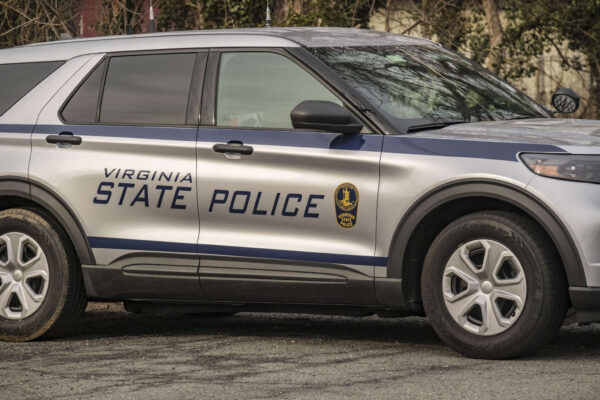
A Maryland driver has been arrested after leading police on an extended chase down the Capital Beltway yesterday (Monday) that crossed state lines and ended with a car flip in Tysons.
According to Montgomery County police, its officers were on the lookout for 26-year-old Frederick K. Njihia of Germantown after getting a report of a man shooting a rifle at people, including a local sanitation worker whose vehicle was hit multiple times.
No one was injured in the shooting, which occurred around 9:20 a.m., the Montgomery County Department of Police said.
The pursuit began when an officer spotted a blue Honda Civic matching the reported description of Njihia’s vehicle. Njihia shot at the police cruiser, flattening a front tire, and other officers pursued him on southbound I-270, police said.
A police pursuit that began in a Germantown neighborhood after a Montgomery County Police officer was shot at came to an end in Fairfax, Virginia. No police officers or citizens were injured during this pursuit. The suspect is in custody.
Video Credit : Spencer Deese#mcpnews pic.twitter.com/OHr7VFeRWa— Montgomery County Department of Police (@mcpnews) July 4, 2022
Virginia State Police were notified about the pursuit at approximately 9:41 a.m. and took over once it crossed the American Legion Bridge and entered the state, according to a VSP news release.
Once the Honda Civic passed into Virginia on I-495, it exited onto Route 7 towards Tysons Corner. When it did a U-turn on Route 7 at Route 267/Dulles Toll Road, a Virginia State Police trooper administered a pursuit intervention technique by making contact with the suspect vehicle. The Honda Civic ran off the road, struck the Jersey wall, and overturned onto its roof.
With a pursuit intervention technique, also known as a precision immobilization technique or PIT manuever, police stop a vehicle by running into its rear, causing it to turn and often flip. The move has been the subject of some debate over its safety.
NEW: The end of a lengthy chase from Montgomery Co. to Tysons on Rt 7 at 267. @VSPPIO ended it by purposely crashing into the vehicle with a PIT (pursuit intervention technique) after suspect made a U-turn on 7. #police @CordellTraffic @RealTimeNews10 @marykimm @TomJackmanWP pic.twitter.com/twSbGzprb5
— Dave Statter (@STATter911) July 4, 2022
POLICE CHASE: Montgomery County police say a man w/ a gun in Germantown fired shots at an officer, then led them on a chase down 270, over the American Legion Bridge onto 495, then onto route 7 and crashed in the Tyson’s area. We can see the car flipped upside down @nbcwashington pic.twitter.com/A2ukN2g0Zn
— Aimee Cho (@AimeeCho4) July 4, 2022
The crash closed all east and westbound lanes on Route 7 and required a medical response, according to the Virginia Department of Transportation. Virginia State Police reported that Njihia was transported to Inova Fairfax Hospital “for treatment of minor injuries sustained when his vehicle overturned.”
The VSP has charged Njihia with eluding police, a felony, and reckless driving, a misdemeanor. He’s currently being detained without bond at the Fairfax County Adult Detention Center.
Njihia also faces four counts of attempted murder and a count of first-degree assault with a firearm in Maryland.

